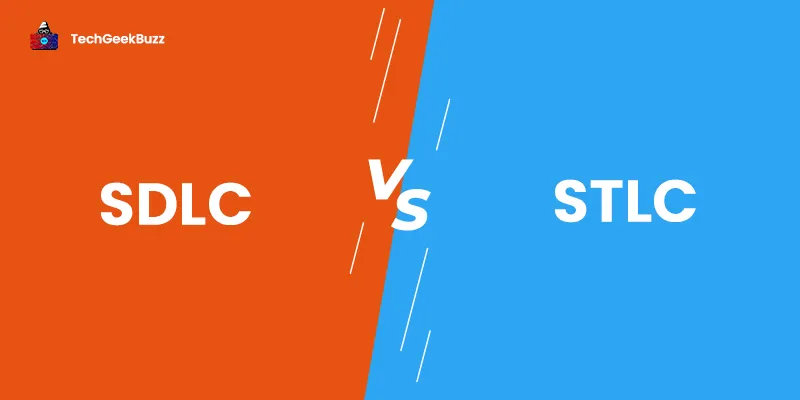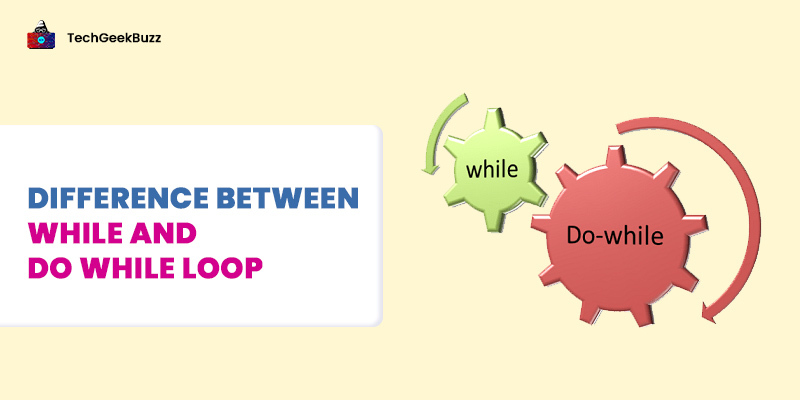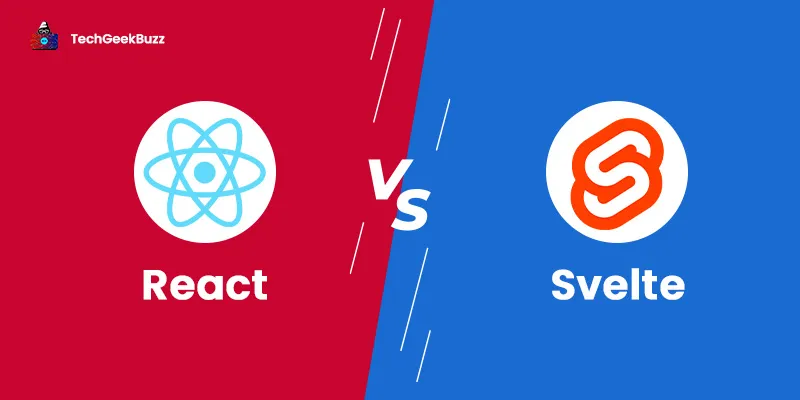Software development is a process that involves various activities for creating, designing, testing, deploying, and maintaining software products. It entails a sequence of steps, called phases, to develop a high-quality software product. This sequence of phases that development teams follow to build software products is called the Software development Life Cycle (SDLC). SDLC consists of six different phases, out of which testing is the one. Like the development team develops software products in different phases, the testing team also carries out testing in a series of phases. The series of phases that a testing team follows to test the software products is called Software Testing Life Cycle (STLC). Therefore, we can say that SDLC and STLC are interrelated to each other. More specifically, STLC is the subset of SDLC. Both SDLC and STLC play a vital role in developing high-quality software products. Let us discuss how SDLC and STLC differ from each other. However, before proceeding, let us briefly shed light on what exactly SDLC and STLC are.
What is SDLC?
SDLC stands for Software Development Life Cycle. It is a methodology with clearly defined activities or phases that facilitates the development of quality software products. In other words, it is a detailed plan that describes how to plan, build, and maintain software applications. This process covers the entire life cycle of the software product, from planning and development to deployment and maintenance. The primary purpose of SDLC is to help development teams to create software products that meet customers’ requirements and quality standards. Moreover, it ensures that development teams build software products in the defined timeframe and cost. SDLC entails six different phases, namely planning and requirements gathering, defining requirements, designing, implementing, testing, and deploying and maintaining. Each phase has its own process and deliverables. The output of the current phase acts as the input to the next phase.
Why SDLC?
Here are some reasons that highlight the importance of SDLC in software development:
- SDLC forms a basis for planning, scheduling, and estimating resources, time, and budget for building software products.
- It ensures that a development team builds a software product in conformance with the customers’ requirements.
- It ensures that all the stakeholders, including the product owners, investors, project managers, and sponsors, are aware of what the development team is doing throughout the project development process.
- Each phase of SDLC has certain entry criteria, deliverables, and exit criteria.
- It minimizes project risks and management plan overhead.
- It ensures a faster and more efficient development process.
Phases
A software development life cycle consists of the following six phases:
1. Planning and Requirements Analysis
The first phase of SDLC is requirement analysis and planning. Here, senior team members collect requirements from customers and stakeholders. Moreover, this phase includes planning for quality assurance requirements and identifying the risks associated with the development of the software product.
2. Defining Requirements
After the team members collect and analyze the requirements, they clearly define and script the software product requirements in a document called Software Requirements Specification (SRS). They share SRS with stakeholders or customers to get their approval.
3. Designing
In this phase, the development team prepares the software design documents depending on the Software Requirements Specification (SRS) document. The design documents provide the overall picture of the software product’s architecture. Moreover, the team develops two types of design documents, namely high-level design document and low-level design document.
4. Coding or Implementation
Once the development team creates design documents, it is time for the coding or implementation phase. This phase is the longest one in the software development life cycle. Skilled software developers choose the appropriate programming languages, frameworks, tools, and databases and start writing code for various functionalities of the system. Moreover, they use various programming tools, including compiler , debugger, and interpreters, to execute the developed code.
5. Testing
The testing phase ensures that the software product created by developers is defect-free and complies with the requirements specified in SRS. The testing team examines each functionality of the software product and ensures that it functions as expected. As discussed earlier, the testing team carries out the testing process in various phases, and this process is called the software testing life cycle (STLC).
6. Deployment and Maintenance
After the testing phase, the deployment process begins. The project manager provides feedback, and the final product is released to the end-users. Even after deployment, the life cycle of the product does not end. Once the users start using the product, the maintenance phase begins. This phase involves regular updates, adding new features, or fixing glitches that remained uncovered during the testing process.
What is STLC?
STLC stands for Software Testing Life Cycle, and it is an indispensable part of SDLC. It is a structured approach with a sequence of activities to test the software product for its functionality, reliability, usability, and security. A team of skilled testers is responsible for performing the testing process. The primary purpose of STLC is to provide the testing team with a simplified process to ensure that the software product developed is free from defects, meets the quality standards, and complies with the specified requirements. Like SDLC, STLC also involves six phases, namely requirements analysis, test planning, test case development, test environment setup, test execution, and test cycle closure. Therefore, software testing is not a single activity. Instead, it is a series of activities that a testing team carries out to ensure the quality of a software product.
Why STLC?
The following are the reasons to follow STLC in the software testing process:
- The primary reason to adopt STLC is that it provides the best possible way to validate the software products.
- It improves the consistency and efficiency of the testing process.
- STLC helps testing teams prioritize the features to be tested.
- Each module of the software product is tested.
- It improves the quality of the software development process.
- It ensures that the end-users receive quality software products.
Phases
STLC consists of the following six phases:
1. Requirements Analysis
This is the first phase of STLC. In this phase, the testing team analyzes the requirements and identifies the testable ones. Also, they identify the types of tests to perform, prepare a requirement traceability matrix, and identify the test environment.
2. Test Planning
In the test planning phase, the senior Quality Assurance Manager is responsible for determining the test plan strategy, along with effort and cost. In addition, they determine the required resources, testing tools, roles and responsibilities of the team members, and training requirements.
3. Test Case Development
Once the test plan is ready, the next phase involves creating and verifying test cases and test scripts. For each unit or module of the software product, the testing team creates individual test cases.
4. Test Environment Setup
The next phase involves setting up the testing environment. If the development team provides the test environment, there is no need for the testing team to involve in this phase. Instead, the testing team would only check the readiness of the test environment, i.e., perform smoke testing .
5. Test Execution
Based on the test plan and test cases, the testing team performs tests on various modules or units of the software product individually as well as collectively. If they identify bugs or defects, they report to the development team. Later, the development team works to fix those defects and sends the modified source code back to the testing team for a retest. This process continues until the testing team finds no defects.
6. Test Cycle Closure
This is the final phase of STLC. It indicates the end of test execution and involves various activities, including test completion reporting, preparing test metrics, documenting the learning out of the project, and test results analysis.
SDLC vs STLC: A Head-to-Head Comparison
The following table maps the differences between SDLC and STLC:
| SDLC | STLC |
| The software development life cycle (SDLC) is a set of activities involved in planning, designing, testing, deploying, and maintaining the software products. | Software testing life cycle (STLC) is a set of activities involved in the testing process only. |
| The primary objective of SDLC is to make the entire software development process successful, including the testing process. | The major objective of STLC is to make the testing process successful and make sure that the software product is defect-free and meets the specified requirements. |
| Since SDLC focuses on the entire software development process, it is a predecessor to STLC. | As STLC is concerned only with the testing process, it is a child or successor of SDLC. |
| Business analysts and product analysts are responsible for gathering requirements and preparing the development plan. | The Quality Assurance (QA) team analyzes functional and non-functional requirements from SRS and prepares the test plan. |
SDLC involves the following phases:
|
STLC involves the following phases:
|
| The development team writes the actual code of the software product. | The testing team writes the test cases and test scripts for each module or unit of the software product. |
| Once the development team writes the source code, they set up the test environment. | It is the responsibility of the testing team to verify the readiness of the test environment, i.e., to perform smoke testing. |
| SDLC requires more number of people. | STLC requires a fewer number of people. |
| In terms of maintenance, the development team releases updates, adds new features, or fixes glitches if any. | The testing team performs regression testing to verify the correctness of the source code after adding new features, fixing issues, or releasing updates. |
| The output of SDLC is the production of reusable software products. | The output of STLC is the tested software products. |
Conclusion
SDLC provides a structured approach to software development, while STLC provides a structured approach to software testing. In other words, SDLC serves as a framework for software development, whereas STLC serves as a framework for software testing. Moreover, STLC is part of SDLC, and both of them help organizations to deliver high-quality software products that conform to customers’ requirements. We hope this article has provided you with in-depth insights into the differences between SDLC and STLC. Still, if you have any questions, feel free to post them in the comments section below.
People are also reading:





Leave a Comment on this Post